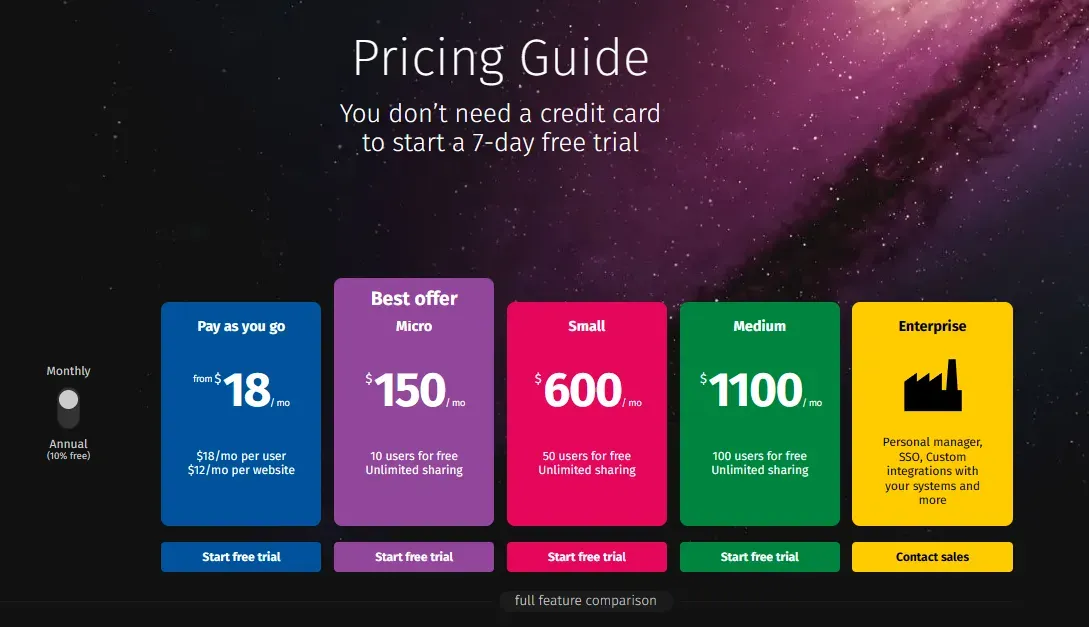In this article, you’ll learn:
Here's a scenario.
You shop around for what you think is a perfect DAM vendor and to make sure that it's exactly what you're looking for, you send them a purpose request proposal (RFP) with a variety of questions that you want to be answered, such as
You shop around for what you think is a perfect DAM system vendor and to make sure that it's exactly what you're looking for, you send them a purpose request proposal (RFP) with a variety of questions that you want to be answered, such as
- Does it support integrations with this software?
- Can it scale up to include more users with time?
- Is it possible to publish DAM assets directly to the web?
So on and so forth. And you receive yes to most of these questions but after spending time with the DAM you realize that it is not exactly what you were looking for.
Why? Did the DAM vendor mislead you to close the sale? Though we tend to assume the worst as a knee-jerk reaction, the reality is that there must have been something wrong with how you worded your RFP.

Instead of writing a binary yes/no checklist, a good RFP would elaborate on your teams' requirements with the expectation of receiving more detailed answers to this query.
Today, we are going to talk about what goes into a good DAM RFP, and things to consider and include in it.
Let's dig in.
What is Digital Assets Management RFP?
RFP is, essentially, a formalized way to ask someone: "hey can you do this and that" and then receive a documented answer that you can refer to if it turns out that the provider can't actually do this and that.
RFP for DAM doesn't differ from that general description generally, it's a simple application of a concept to the realities of digital asset management software.
Thus, to write a proper digital asset management RFP you also need to have a semblance of understanding of what DAM can and cannot do. By knowing what to expect, you can write better questions that go to the root of the problem that you are expecting to solve by using DAM.
Benefits of Sending RFP To Buy DAM: Why Bother With It?
RFPs are a good thing, but they are from standard industry practice. In our experience, receiving RFP from a would-be user is more of a rare exception rather than a commonplace.
Still, we would strongly encourage you consider making one, as it can give you a better understanding of DAM's capabilities and avoid disappointment down the line.
- It allows you to compare vendors and their products side by side, which helps you make a more informed decision.
- With RFP, it is easier to negotiate in terms of pricing as you know precisely the things that DAM is lacking.
- It helps you ensure that the vendor you choose can meet your organization's compliance requirements.
- You will waste less time in the long run as you will know what to expect from using a particular DAM. So, there's less chance of you churning and seeking another vendor that actually does the things that you expect, and you will spend less time migrating assets from one vendor to another.
In a sense, a properly constructed RFP for DAM creates a win-win scenario for you and the DAM vendor, giving both parties a clear understanding of hopes & expectations from the partnership.
After all, the era of DAM pricing as a standalone product is way past us. With most DAMs offering their services through the SaaS model, it's in everybody's interest to have returned, long-term partnerships, instead of trying to fleece users through ambiguity and half-truths.
Consider Your Requirements for a DAM Vendor
Broad strokes come first. Before actually writing your digital asset management system RFP, think about the digital asset management requirements that are absolutely vital to you.
Once you have identified a couple of broad categories, you can then go in-depth with each one, specifying exactly the functionality that you expect to see.
Although it's completely up to you what to include in your RFP, here are a few things we'd suggest you think about:
- A number of users you are going to have. Are these users going to be inside DAM and using all its functionality or some of them will only need to receive assets. Many DAMs draw a distinction between the groups so understanding how vendor accommodates both is crucial.
- Asset types you are going to work with. Although DAM is able to do basic processing and indexing for all asset types, some solutions have expanded functionality that you may find valuable.
For example, if you're constantly working with videos, then having the ability to trim, crop, and leave comments on the timeline can make your life easier. Similarly, if you're working with a lot of faces that you need to identify, ask if the vendor has something like face recognition to help you with asset tagging.
- Storage and storage type. It's a common practice to lock extra storage behind a premium, so consider how much storage you are going to need and what are you expected to pay for that amount.
Also, consider alternative storage types. Pics.io, for instance, offers you a way to keep assets on your existing Amazon S3 or Google Drive storage, so if you're absolutely confident that you can't migrate to the vendor's storage, don't forget to ask that as well. - Integrations. We expect that modern software doesn't operate in a vacuum but that it can integrate with other tools that you're using. Can DAM of your choosing support these integrations out of the box? If not, ask if it is possible to create a custom integration and, if so, what is it going to cost you.
- Security and compliance requirements. Some teams, especially NGOs, might have to comply with certain regulations to do business. Is DAM GDPR or ADA compliant? Can it prove to you that it actually is? Sometimes, you might find yourself in a situation where the DAM is just right but lack of compliance can be an ultimate dealbreaker.
- Budget. With how many tiers of subscriptions are there, it can honestly be confusing to figure out if the scope of your expectations is going to be within the budget that you are able to spend. Outline all of your expectations from using DAM and explicitly ask how much is it going to cost you per year.

Another good tip is to create what is effectively a business case for DAM and to think about what you want to accomplish by using it. When you understand your personal purpose for considering DAM in the first place, you can focus on criteria that make that business case possible.
After you had some time to mull over the process, it's time to actually write the RFP. Below is the short template you can follow to write your RFP for the digital asset management system and ensure that you don't miss a thing.
10 Steps on Creating RFP for Digital Asset Management System
- Begin by outlining the scope of the project and the objectives you want to achieve.
- Create a list of requirements for the system, based on said considerations.
- Include a timeline and an expectation of when you need the system to be up and running. This is especially crucial if the DAM in question is missing some functionality out of the box and you want to negotiate a custom development of a given feature.
- Include a section on vendor qualifications and their ability to comply with any regulatory acts, if you need to adhere to those.
- Include a section about pricing and payment terms. What are the payment options that are available, ask if the vendor can offer you any discounts based on some circumstances (lack of a particular feature, NPO discount, etc.)
- Include a section on support and maintenance. While DAMs are designed to be as intuitive as possible, they're still complex systems. Inquire about the vendor's support package: how it functions, whether are you going to have a personal onboarding manager, are there any free pieces of training and workshops that the company can offer.
- Don't forget to ask about ongoing support of the product as well. While most companies tend to update and expand their offering as time goes on, some DAM vendors tend to lock new features behind paywalls, or even incrementally increase your subscription price as they add new features.
In such circumstances, the cost of DAM may quickly exceed your expected budget. So, don't hesitate to ask about the things you can expect from the DAM in the long term. - Describe the integrations and expansions that you expect to see. Outline the software stack that you're using right now and inquire if DAM can support or even directly integrate with any applications you are already using.
If DAM doesn't support them, it would be valuable to ask if there's a way to accommodate your needs, either through direct access to API or through custom development. - Specify the amount and type of storage that you're currently using. Try to be as specific as possible and inquire if it would be possible to migrate all your assets to a new environment and how much time and money is it going to cost you.
- Include a section on the submission process, including the deadline for business proposals and contact information for questions.
Conclusion
Writing a sensible RFP is an excellent way to anticipate and predict the problems before you actually purchase DAM. If you're picking between several vendors, it's also a great way to narrow your search criteria and lock on the vendor that fits you the best.
However, a lot of these requirements and expectations might seem alien to people who haven't worked with DAM before and only know about it as a tool to store and manage your assets.
For that purpose, we highly recommend you book a free demo with us or participate in a free 7-day trial to give you a hands-on understanding of what DAM can do and, most importantly, what DAM can do for you. We are more than happy to answer all your questions, and, once you're ready, you are free to focus on writing RFP for the digital asset management tool of your choice. if you need any further clarifications.
Hope to see you there ;)
Did you enjoy this article? Give Pics.io a try — or book a demo with us, and we'll be happy to answer any of your questions.
FAQ
What is an RFP?
A purpose request for proposal (RFP) is a document used to solicit proposals from vendors in order to purchase a product or service. These documents usually tend to include things that you are expecting to get from using the software or a service and include technical, legal, and functional requirements that you need.
How do you create a digital asset management system?
Digital asset management usually refers to the software solution to help you manage and organize a large library of media assets. In reality, however, DAM isn't only the software but the set of systems and methodologies that improve the way you create, repurpose, search, and distribute your valuable digital assets. DAM software, then, is only half of the equation, a tool that helps you realize your DAM workflow in a simple and streamlined fashion.



